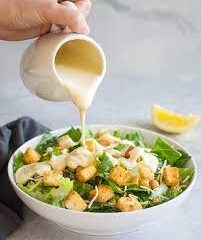Marketing and Your Horse’s Health

If you take the time to search my blog you will find at least one detailed article covering the details and science behind the topics this article is using for a backdrop. I will embed the links to those articles so you have an easy path to a deeper understanding.
The last two of my articles covered the role marketing plays in convincing us to spend our money on one product instead of a competitor. While these articles were helpful I realized that the subject required a larger context for people to understand the motivation for some companies to use certain tactics in their marketing.
Let’s take a look at some of the “hot” topics.
NSC and Insulin Resistance.
Non Structural Carbohydrates have become center stage in the horse feed war being waged for your money.
NSC is an easy narrative to push because horses suffering from metabolic disorders present with very painful and life threatening symptoms. I know this only too well as it was my mare suffering from metabolic laminitis that led me to become Jim the Feed Guy and EMS was my first crusade.
I am particularly prickly on how feed companies present their NSC to consumers because by not providing accurate NSC data on a product or making unsubstantiated claims of efficacy will put compromised horses at risk and this is something that I simply will not abide in.
Becoming educated on the role of NSC in a horse’s diet as well as how to determine appropriate feed for these animals was a startling revelation to me. My original mission was to provide the true science behind NSC to horse owners and I feel I did an outstanding job in that endeavor.
ECIR was out there telling everyone that everything had to be less than 10% NSC or your horse was at risk yet never explaining fully how the NSC equation plays into overall diet and feed rate. I’m not accusing anyone of anything other than getting it wrong but most of the feed and supplement companies “approved” by this organization are donors to the 501c.
The founder is on the payroll of a supplement company that has an entire catalog of supplements designed to support insulin resistant horses. There’s not a shred of science behind the supplements but I see them in every feed room.
There are many other supplements that jump on the IR bandwagon and none of them have any science behind them. Even some gut supplements are doing gymnastics to claim to help with IR. “Our stuff promotes a healthy hindgut which reduces the risk of laminitis in IR horses”.
Yep, I believe in fairies, too.
Why does a very popular and well known manufacturer of horse feed staunchly refuse to comply with AAFCO guidelines on reporting NSC?
The answer is simple. If they guarantee their maximum NSC at 16.5% instead of an AVERAGE 11.4% then they have no advantage over their competition.
Ingredients
It is certainly critical to look at the ingredients in horse feeds and supplements since a guaranteed analysis doesn’t ever tell the whole story.
I have a training aid from Purina. It’s a jar containing what appears to be a tasty looking pelleted horse feed. The GA shows 14% protein, 6% fat and 18% crude fiber. The ingredients are motor oil, lawn fertilizer and sawdust.
Ingredients are terribly misunderstood by most consumers because they are not in the industry. It is for this reason that companies take great liberties with misinformation surrounding ingredients.
Whole Grain Free is not Grain Free
The first question I always ask a new client is why they chose their current feed.
By far the two most common reasons are “It has really low NSC” and “It’s grain free”.
We’ve beaten NSC reporting to death so let’s look at the difference between whole grain free and grain free.
If we look on the bags of some very well known feeds some of them will proclaim in big, bold letters “Whole Grain Free”. Well, looking at the feed tag I see dried distillers grain, rice bran and wheat middlings. All great ingredients but they are all based on grains; corn, rice and wheat.
Why waste the ink to say “Whole Grain Free”? Why isn’t there a whole line stating clearly “While this feed contains no whole grains it does contain components of grains”?
The answer is simple…
“Why did you choose this feed?”
“It’s grain free”.
“Why is that important to you?”
“Because grain is inflammatory.”
I’m always tempted to ask them to define “inflammatory response” but I know they can’t and making a prospect look dumb is not the way to gain a new customer.
Soy, Molasses, Iron, Selenium, Yadda, Yadda
I love to refer to some individual ingredients as “the enemy du jour”. At one point or another just about every ingredient on a feed tag has been targeted as harmful.
This may surprise you but most of the ingredients on a feed tag ARE harmful to horses…IF they are fed in large or unbalanced quantities.
Feeding five pounds of corn to a horse will eventually if not immediately kill it. Using corn as 4% of the total volume of feed for energy and protein is just fine.
Soy is probably the best plant based source of protein and lysine for horses. It is highly bioavailable and relatively inexpensive. While it is true that 0.5% of horses are sensitive to soy 99.5% of horses are not.
The founder of the ECIR group works for a company that sells a supplement that “mitigates and balances iron in horses” coincidentally published a paper based on research studies universally rejected by every equine PhD on earth. Yet when I tell people that iron simply isn’t a problem for horses this “study” is thrown in my face as gospel by every consumer who wants to believe that iron really IS a problem.
Fixed Ingredients versus Fixed Formula versus ?? Who Cares?
“Our feeds are fixed ingredients that’s why we print our guaranteed analysis on the bag instead of a tag.”
Sounds logical…unless you think it through.
Most companies don’t like to change formulations on their premium feeds because it means changing entire components of a feed line. So if a company is using beet pulp, alfalfa meal and soybean hulls as ingredients they probably won’t change.
What DOES change are the inclusion rates. I may have to add a little more of this and a little less of that depending on the nutrient levels of the ingredients as tested when received.
The mills aren’t building cars where every component is identical from batch to batch. Nutrient values in agricultural commodities change from batch to batch.
Think about it. If a mill used exactly the same amount of beet pulp, alfalfa and soy for every batch their feed tags would have to change for every batch which is fine except that the performance of the feed would also change. This week’s run of Purina Senior Active will have 18% protein, 6% fat and 32% fiber, next week 12%, 9% and 14%. How the hell is that going to work?
One of the members of my Facebook group was taking a well known feed company to task about their reporting of NSC. In their defense of not publishing clear NSC data they stated clearly that it’s impossible to predict NSC values because the nutrient values of agricultural commodities change from batch to batch. That’s pretty much a literal quote.
This same company’s greatest claim to quality is that they are using a “fixed ingredient process”. Huh?
Fuzzy Research
There are two feed companies that perform the bulk if not the entirety of the research on equine feeds and performance. They are Purina and Cargill.
There is only one major supplement company that conducts and publishes research on their supplements. Kentucky Equine Research.
Research Proven Ingredients
This means that there may be solid research on one or more of the ingredients in a product. Is it on horses or humans? Is it the same ingredient? Is it the same form or compound of the tested ingredient?
If there is no research on the actual finished product it is meaningless.
May, Shown To and Indicate
These are terms that are completely meaningless when you are reviewing supplements.
“Research has shown that this ingredient may support a healthier hindgut.” Really?
So you’re on a dating app and the description says, “My profile photo may be a recent photo of me possibly working on my latest action film”. Are you going to set up a meeting?
Back in my younger days before electricity I had a name tag that I velcroed to my Army flight suit whenever I was in a bar after work. “Giacomo ‘Jack’ Fiorini, Astronauta d’Italia” was an Italian Astronaut in the US for training to go on a shuttle flight. It worked.
Hey, now you know why I have horses. Karma is real and I need to rack up some positive points.
I digress.
No research, no efficacy.
It’s All About the FUD
Fear Uncertainty and Doubt are the tools of marketing.
You’re afraid that you are not providing the best things for your horse.
You are uncertain about what choice to make
You doubt that you are making the right choice
Follow the Science
If you stick with black and white facts you can’t go far wrong in your quest to do the best thing for your horses.
Plenty of good forage, clean water and a solid supplemental feed is all most horses require unless they have some other medical or environmental consideration.
It’s easy to believe something you want to believe will help your horse even if it may not.
As always, if you found this article helpful my horses would appreciate some hay so consider buying them a bale or two!
https://www.buymeacoffee.com/jimthefeedguy
